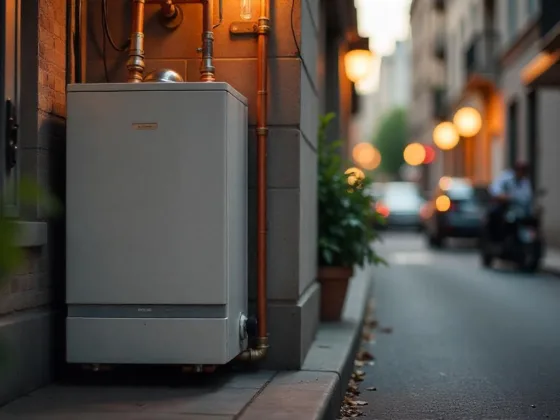Table of Contents Show
Have you decided to undertake the interior painting project in your house this year? Good for you, as you will be joining the multitude of homeowners who are employing their DIY skills to paint the interior of their home on their own, instead of hiring a professional painter.

Some homeowners decide to start painting their home as some sort of a hobby while others do it due to financial reasons.
Regardless of the reason behind the decision, if you’re one of those homeowners eagerly waiting to commence your project, bear in mind that it isn’t as simple as you imagine. You are supposed to follow certain steps and employ multiple skills to get the job successfully done.
These tips by Thornton CO painters might help you to become more than just an amateur painter.
Read Also:
Wall Inspection
As much as you are eager to begin your painting journey for the very first time, hold your horses as walls have to be inspected first.
It’s extremely likely for walls to show signs of peeling, dents or discoloration, all of which need to be fixed prior to taking the brush into your hands. Sand the surface until it becomes flat, repair the dents and try to clean the discolorations thoroughly.
It’s a time-consuming process that is going to take you a few days, but it certainly guarantees greater success than painting over a cracked, uneven, or stained wall.
Go Shopping
Another initial important step is purchasing supplies, necessary for the process. As this is your first-time interior painting, you probably lack brushes as well as paint which suggests visiting the store and getting some.
Although the original idea of deciding to paint the house yourself might have been to save money by not hiring a professional painter, it doesn’t mean that you should choose the lowest-cost paints and brushes in the store.
Cheap colorants don’t last long and won’ cover the surface in the way you intended to be covered. Low-quality brushes are even worse as they’ll leave brush marks all over the walls, creating an impression that some child is responsible for the walls’ look.
Use the money you saved from not requiring the services of a painter and invest them in top-notch paints, brushes, and rollers.
Low-quality supplies would cost you double without even realizing it. You’ll either end up purchasing another set of quality materials or you’ll hire a professional painter to come and fix the walls for you. Click here to calculate the approximate price of painting your home interior.
Protect Your Furniture
In order to avoid being negatively surprised by the mess you’ve made after being done with the painting process, it’s a wise idea to protect your furniture as much as you can beforehand.
The best solution would be to take the furniture out of the room or even better out of the house, by keeping it in a storage room until the whole procedure is finished.
However, most homeowners aren’t provided with the opportunity to store it away, which leads us to the second option of covering it with plastic which you’re supposed to tape to the ground in order to avoid any kind of paint contact. Another thing to bear in mind is flooring, which is even more exposed to getting damaged than furniture.
Instead of using newspapers to cover it, a better solution would be to use drop cloths which are highly absorbent and non-slippery, thrown away after use.
Naturally, covering your floor with newspapers is the least expensive variant, but the risk of damaging your floor is much higher than using drop cloths.
Don’t Forget the Primer
Using a primer is one of the essential factors which contributes to the effect of nice-looking walls. The purpose of the primer is to hide any kind of wall discolorations and reduce the number of coats you need in order to achieve a vivid color.
Purchasing a primer similar to the paint you’re planning to use, guarantees more coverage than purchasing a white one.
In addition, primers based on water are more suitable for covering flaws and wall defects, whereas the ones based on oil are more useful for covering walls in far worse conditions, damaged by water or smoke.
Visit this link:https://www.thebalancesmb.com/importance-of-primer-844651, for more information on primer types and their importance.
Nowadays, you can purchase a mixture of paint and primer instead of buying them separately. However, blends are convenient for surfaces that are getting painted for the first time, not for walls that haven’t been painted for a long period of time.
Use Paint Tricks
There’s no other way of achieving a uniform wall look than by mixing the paint of different cans. Believe it or not, the paint in each can you purchase isn’t the same, regardless of the brand.
Therefore, by creating a mixture of all paint buckets, you’re avoiding the risk of having slight differences in color.
Another thing which you shouldn’t forget is purchasing one or two additional buckets instead of running to the store at the last minute.
Apart from calculating the exact amount of paint you’ll need, there is no harm in buying some extra supplies, as a colorant is supposed to remain fresh.
By prolonging the painting process, you’ll need a spare bucket of fresh colorant to mix it together with the one being open for a couple of days.
In case you’re planning to finish your home project in a few days, then you just need to cover the paint and roller with plastic to prevent drying out. If you’re not painting on consecutive days, wash the brushes and throw away the roller covers.
Wrap Up
Deciding to paint your house instead of hiring a professional painter is a bold decision, demonstrating a genuine interest to develop and master your DIY skills.
Make sure you purchase the right supplies, cover all the furniture and floors to prevent damage, and use the above-mentioned tricks for achieving a greater effect!










